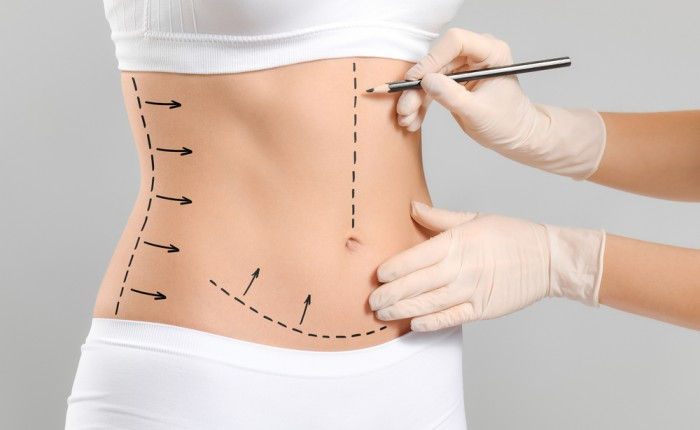Septoplasty vs. Rhinoplasty: Which Procedure Do You Need?
- sadaf khan sudozai
- Feb 6
- 5 min read
When it comes to nasal surgery, two procedures often come into the spotlight: septoplasty and rhinoplasty. Both of these surgeries involve the nose, but they serve very different purposes. Whether you're considering Rhinoplasty in Islamabad for cosmetic reasons or medical needs, understanding the key differences between septoplasty and rhinoplasty will help you make an informed decision.
In this blog, we’ll walk you through what each of these procedures entails, the problems they address, and how to decide which one is right for you. By the end of this article, you'll be able to better assess whether septoplasty or rhinoplasty is more suitable for your personal needs.

What is Septoplasty?
Septoplasty is a surgical procedure performed to correct a deviated septum, which is a condition where the septum (the cartilage and bone that separates the two sides of the nose) is crooked or misaligned. A deviated septum can cause a variety of issues, including difficulty breathing through one or both nostrils, chronic nasal congestion, sinus infections, and even snoring or sleep apnea.
In septoplasty, the primary goal is to straighten the septum to improve airflow and enhance nasal function. The procedure typically involves the surgeon making incisions inside the nostrils (to avoid visible scarring), then repositioning or removing the cartilage and bone to align the septum properly.
Key Features of Septoplasty:
Purpose: Improves nasal breathing by correcting a deviated septum.
Procedure: Incisions are made inside the nostrils, and the septum is straightened or restructured.
Recovery: Recovery is usually faster, with most patients returning to normal activities within 1-2 weeks, though some swelling may persist for several months.
Septoplasty is strictly functional and does not address aesthetic concerns. Its primary aim is to restore normal airflow and alleviate symptoms related to a deviated septum, such as chronic congestion or frequent sinus infections.
What is Rhinoplasty?
Rhinoplasty, commonly referred to as a nose job, is a cosmetic surgery designed to reshape the external appearance of the nose. While rhinoplasty can also help improve nasal function, its main purpose is aesthetic—enhancing the size, shape, and overall appearance of the nose to create better facial harmony.
Some of the most common reasons people undergo rhinoplasty include:
Reducing or increasing the size of the nose
Smoothing out a bump on the nasal bridge
Reshaping the tip of the nose
Narrowing wide nostrils
Correcting asymmetry
Fixing the appearance of the nose after injury or trauma
In addition to cosmetic purposes, rhinoplasty can also help with minor functional issues, such as improving airflow. However, the main goal of the procedure is to improve the shape and aesthetic of the nose.
Key Features of Rhinoplasty:
Purpose: Reshapes the nose to improve its appearance.
Procedure: Incisions may be made inside the nostrils (closed rhinoplasty) or across the columella (open rhinoplasty). The surgeon reshapes the cartilage and bone to achieve the desired look.
Recovery: The recovery period for rhinoplasty typically involves 1-2 weeks of downtime, with swelling and bruising peaking within the first few days.
Rhinoplasty is a cosmetic procedure, although it may be combined with functional adjustments if necessary. It is ideal for individuals looking to improve the visual appeal of their nose, whether to reduce its size or alter its shape.
Septoplasty vs. Rhinoplasty: The Key Differences
While both septoplasty and rhinoplasty focus on the nose, they differ in terms of purpose, technique, and recovery. Here’s a breakdown of the key differences between these two procedures:
1. Primary Objective
Septoplasty: The primary goal is functional—correcting the structural issue of a deviated septum to improve breathing and alleviate related symptoms.
Rhinoplasty: The main objective is aesthetic—reshaping the nose to enhance its appearance and achieve better facial harmony.
2. Surgical Technique
Septoplasty: This surgery involves making incisions inside the nostrils to access and reposition the septum. There is minimal external modification to the nose.
Rhinoplasty: Rhinoplasty requires more invasive procedures that may involve internal or external incisions. The external appearance of the nose is reshaped, including the nasal bridge, tip, and nostrils.
3. Recovery Time
Septoplasty: Recovery is typically quicker, with most patients feeling better within 1-2 weeks. There may be some swelling, but it is usually less pronounced than in rhinoplasty.
Rhinoplasty: Recovery tends to take longer, with swelling and bruising being more significant. Most rhinoplasty patients take around 2-3 weeks off from work or school, but full results may take several months to become visible.
4. Combination of Procedures
Septoplasty: If you have both functional and cosmetic concerns, septoplasty can be combined with rhinoplasty in a single procedure to improve both the structure and appearance of the nose.
Rhinoplasty: Rhinoplasty can sometimes address minor functional concerns, such as airflow issues, but it is primarily a cosmetic procedure. For more significant functional issues, septoplasty may be performed alongside rhinoplasty.
Which Procedure is Right for You?
Deciding between septoplasty and rhinoplasty depends on your specific needs. If you are experiencing chronic nasal congestion, difficulty breathing, or frequent sinus infections due to a deviated septum, septoplasty may be the right choice for you. This procedure is designed to restore normal airflow and alleviate medical symptoms related to nasal obstruction.
On the other hand, if your goal is to enhance the appearance of your nose—whether to reduce its size, reshape the tip, or smooth out a bump—rhinoplasty is the ideal option. For individuals who are unhappy with the aesthetics of their nose and want a more balanced, harmonious facial appearance, rhinoplasty can provide a transformative result.
In many cases, patients opt for a combination of both procedures, especially if they have both functional and cosmetic concerns. For example, someone who has difficulty breathing due to a deviated septum may choose to undergo septoplasty to improve airflow, along with rhinoplasty to refine the nose’s appearance.
Why Choose SKN Cosmetics Clinic for Your Nasal Surgery?
Choosing the right clinic for your nasal surgery is essential to achieving the best possible outcome. If you're considering Rhinoplasty in Islamabad, SKN Cosmetics Clinic is a trusted provider of high-quality care. The clinic’s skilled surgeons are experienced in both septoplasty and rhinoplasty, ensuring that you receive the treatment most suited to your needs.
At SKN Cosmetics Clinic, you will receive personalized attention and a tailored approach, whether you are seeking functional improvement, aesthetic enhancement, or a combination of both. The clinic is dedicated to providing results that enhance your natural beauty while ensuring optimal nasal function.
Conclusion
When considering nasal surgery, it’s important to distinguish between septoplasty and rhinoplasty. Septoplasty is primarily for improving nasal function by correcting a deviated septum, while rhinoplasty focuses on reshaping the nose for cosmetic enhancement. Depending on your goals—whether functional, aesthetic, or both—you can determine which procedure best meets your needs.
If you're considering either procedure, it’s important to choose a clinic that specializes in nasal surgery and has a proven track record of success. SKN Cosmetics Clinic offers expert care and guidance to help you achieve your desired results, whether you're opting for septoplasty, rhinoplasty, or both. Book a consultation today and take the first step toward enhancing your nasal function and appearance.





Comments